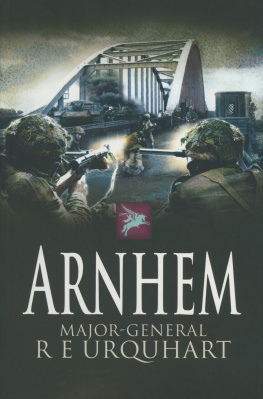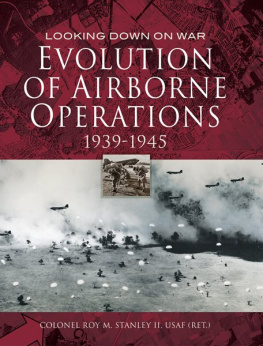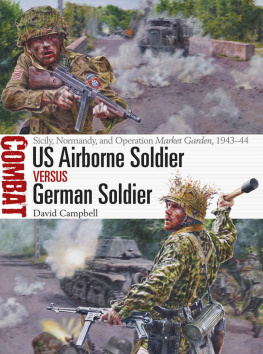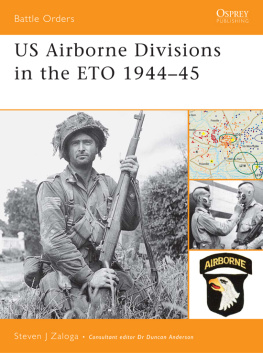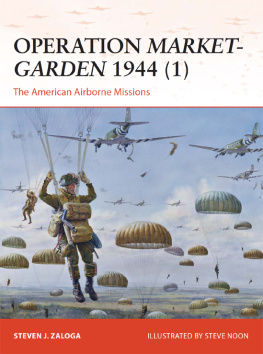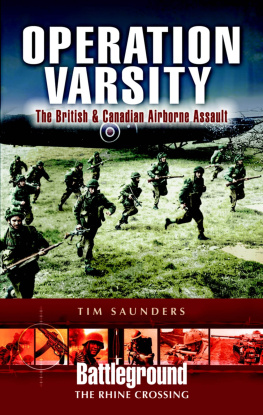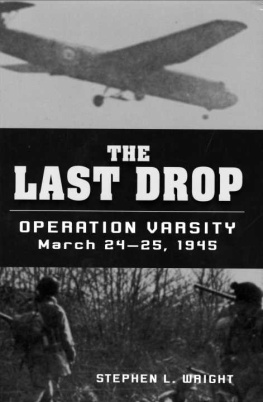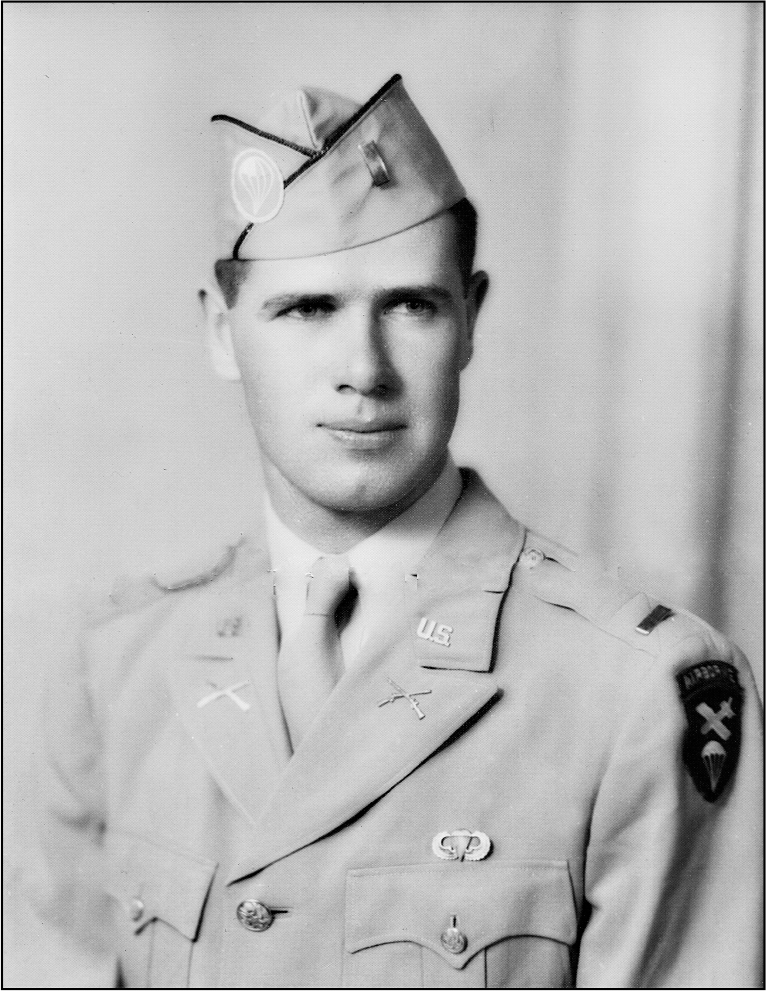More Praise for FOUR HOURS OF FURY
Fenelons epic account of the Allied invasion of Nazi Germany re-creates in stirring detail both the generals strategies and the privates emotions as their colossal effort climaxed in momentous achievement. Four Hours of Fury is a fine tribute to the gallantry of the men and women who, against overwhelming odds, vanquished a great evil.
Craig Nelson, author of Pearl Harbor , Rocket Men , and The First Heroes
Diving into Four Hours of Fury is like opening the jump door on a C-46 transport high over Germany in March of 1945. Youre an Allied paratrooper and the Rhine is fast approaching. Waiting are 55,000 Wehrmacht soldiers anxious to make sure you dont finish the day alive. Your orders are stark: Keep taking ground! A former US Army paratrooper, James Fenelon brings this story of the wars largest airborne assault to life as only he can, using the voices of the men who were there to deliver heart-pounding realism. The book is a gripping reminder that the crash of war is at its most deafening just before the end.
Adam Makos, author of Spearhead: An American Tank Gunner, His Enemy, and a Collision of Lives in World War II
Masterfully researched and written with a novelists eye for detail, Four Hours of Fury hurls readers into the heart of one of World War IIs most ferocious fights.... Readers will feel the buzz of bullets overhead, smell the vomit in the back of cramped plywood gliders, and duck as the enemys artillery thunders. [This] is one helluva combat story.
James M. Scott, author of Target Tokyo and Rampage
Fenelon puts you in a transport plane, straps a parachute to your back, and sends you into an adventure commencing 1,000 feet over Nazi German skies. Four Hours of Fury is a brilliant tribute to the last great parachute assault, and the men who invaded Hitlers empire from the air.
Jonathan W. Jordan, author of Brothers, Rivals, Victors
Fenelons experience as a paratrooper and his ability to describe in thorough detail what it takes to conduct an airborne operation, as either a private or a general officer, captures the lethal effectiveness of vertical envelopments, whether on the World War II battlefield with Operation VARSITY or today. Critics may question operations such as VARSITY as they assess the time involved, the distance traveled, what might have been achieved with alternative forces, and the total number of casualties, but theres no doubt that the psychological effect of an audacious paratrooper drop creates a force multiplier on the enemy that cannot be matched.
Brigadier General David L. Grange, US Army (Ret.), former commander of the 75th Ranger Regiment and 1st Infantry Division
A riveting chronicle of personal courage, overwhelming logistics, and inevitable mayhem that is as authentic as it gets. The ambition, scope, and execution of Operation VARSITY remains unparalleled in the annals of warfare, Fenelon writes. The same can be said of his telling of the largest single-day airborne assault of World War II.
Walter R. Borneman, author of Brothers Down: Pearl Harbor and the Fate of the Many Brothers Aboard the USS Arizona
Told with a masters attention to detail and historical accuracy... James M. Fenelon emerges as a talented storyteller, anchoring this narrative of a grand military offensive with rich portraits of those whose sacrifices made it successful.
Gregory A. Freeman, author of The Forgotten 500 and The Last Mission of the Wham Bam Boys
Deeply researched and richly detailed, Four Hours of Fury constitutes a major addition to the military history of World War II. A particular virtue of the book, among many, is the close attention paid to the GIs who carried out the mission.
John W. Jeffries, author of Wartime America: The World War II Home Front

Scribner
An Imprint of Simon & Schuster, Inc.
1230 Avenue of the Americas
New York, NY 10020
www.SimonandSchuster.com
Copyright 2019 by James M. Fenelon
All rights reserved, including the right to reproduce this book or portions thereof in any form whatsoever. For information, address Scribner Subsidiary Rights Department, 1230 Avenue of the Americas, New York, NY 10020.
First Scribner hardcover edition May 2019
SCRIBNER and design are registered trademarks of The Gale Group, Inc., used under license by Simon & Schuster, Inc., the publisher of this work.
Jacket design by Jonathan Bush
Jacket photographs: Parachutes by Robert Capa/Stringer/Hulton Archive/Getty Images; Planes and Background Parachutes by FPG/Hulton Archive/Getty Images; Overcast Sky by MSPT/Shutterstock; Explosions by Michal Zduniak/Shutterstock
For information about special discounts for bulk purchases, please contact Simon & Schuster Special Sales at 1-866-506-1949 or .
The Simon & Schuster Speakers Bureau can bring authors to your live event. For more information or to book an event, contact the Simon & Schuster Speakers Bureau at 1-866-248-3049 or visit our website at www.simonspeakers.com.
Library of Congress Cataloging-in-Publication Data
Names: Fenelon, James (James M.), author. Title: Four hours of fury : the untold story of World War IIs largest airborne invasion and the final push into Nazi Germany / James M. Fenelon. Description: First edition. | New York : Scribner, [2019] Identifiers: LCCN 2019002135 (print) | LCCN 2019010864 (ebook) | ISBN 9781501179396 (eBook) | ISBN 9781501179372 (hardcover) | ISBN 9781501179389 (pbk.) | ISBN 9781501179396 (ebk.) | ISBN 9781508285533 (eaudio) Subjects: LCSH: Operation Varsity, 1945. | World War, 19391945CampaignsGermany. Classification: LCC D757 (ebook) | LCC D757 .F46 2019 (print) | DDC 940.54/213553dc23 LC record available at https://lccn.loc.gov/2019002135
ISBN 978-1-5011-7937-2
ISBN 978-1-5011-7939-6 (ebook)
For Frank Dillon. Thank you.
He conceived the two armies to be at each other panther fashion. He listened for a time. Then he began to run in the direction of the battle... he said, in substance, to himself that if the earth and the moon were about to clash, many persons would doubtless plan to get upon the roofs to witness the collision.
Stephen Crane, The Red Badge of Courage
LIST OF DIAGRAMS AND MAPS
PROLOGUE
On Saturday, March 24, 1945, an armada of over 2,000 Allied aircraft droned through the bright morning sky over Belgium. Seventeen thousand airborne troops sat crammed in the cargo holds waiting to be dropped via parachute and glider into Germany. Consisting of transport planes and more than 1,300 towed gliders, the line of aircraft stretched back to the horizon for hundreds of miles. Flying at an altitude of just a thousand feet, the swarm generated a buzz that seemed to announce the fleets arrival from every direction. Fighter escorts, biding their time and scanning for enemy aircraft, flew in lazy patterns above the staggered formations of lumbering transports.
Spearheading what Allied commanders hoped would be the final offensive in Europe, the transports carried troops from two elite divisions: the British 6th and the American 17th Airborne. Both were to be dropped over the same patch of German farmland five miles deep by six miles wide on the far banks of the Rhine River. As part of the largest operation since the Normandy invasion, the airborne units were to seize a bridgehead on the enemy side of the river and hold it until ground forces surged across the 400-yard width of the Rhine.
Next page

